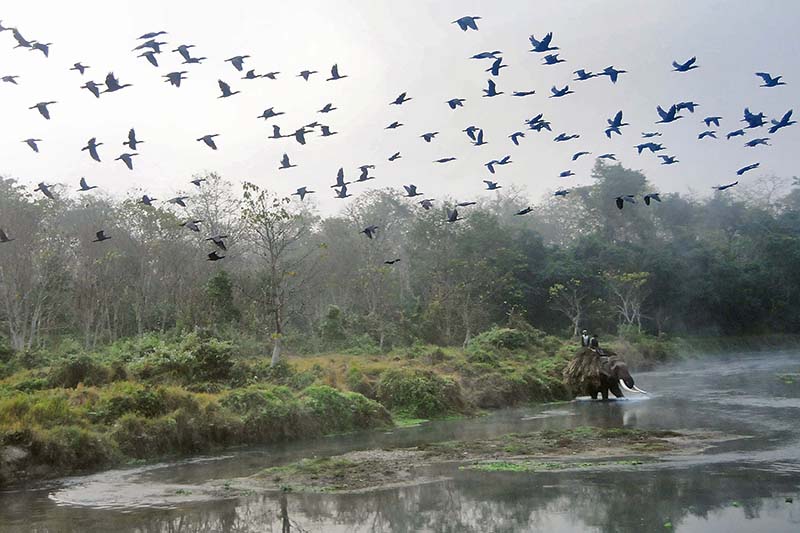Waterbird Census from today

Kathmandu / Jan. 7: The Department of National Parks and Wildlife Conservation (DNPWC), Bird Conservation Association, National Trust for Nature Conservation (NTNC), Himalayan Nature, Federal Government and local bodies are going to start the ‘Asian Waterbird Census’ from various wetlands of Nepal.
The count is especially for the birds that are comfortable on the water and are dependent on it. It starts on the first Saturday of January every year in 27 locations and 30 wetlands.
According to ornithologist Dr. Hem Sagar Baral, the census is to obtain information on an annual basis of waterbird populations at wetlands in the region during the nonbreeding period of most species (January), as a basis for evaluation of sites and monitoring of populations.
Dr. Baral, who is also the Country Representative of the Zoological Society of London, said that it was also to monitor on an annual basis the status and condition of wetlands and to encourage greater interest in waterbirds and wetlands amongst citizens.
In the last year’s count, 62 species and 56512 waterbirds were recorded in 27 sites, 30 lakes/marshes/nest trees. Ruddy Shelduck – the most numerous migratory waterbird was also found in wetlands of Kathmandu,
Chitwan National Park and Katnali last year, Dr. Baral informed. Wetlands birds are under threat and their population is declining from various sites due to over-exploitation, increase in human pollution, disturbance in wetlands, shrinkage, eutrophication, development including farmland to urbanisation and water shortage
Hunting, trapping, poisoning and poaching mostly outside the protected areas, climatic unbalance, high voltage lines and threats in breeding grounds are other threats to waterbirds.
Director General at the DNWPC Dr. Maheshwor Dhakal said that the result will be announced on World Wetlands Day (February 2, 2023). The Day is going to be organised in Chitwan as the district is rich in biodiversity and suitable habitat for waterbirds, he added.
He said that the count will be organised in a simple method through the citizen scientist’s method. Youth involvement is very important for the conservation of waterbirds, he said.
“This type of work will contribute to the conservation of birds and wetlands, to cooperate in conservation by increasing public awareness about water and water-dwelling birds. It will also support the implementation of the actions specified by the National Wetlands Policy and National Biodiversity Strategy, Protected Area Management Strategy (2022-2030),” said a press statement issued by Ajay Karki, spokesperson and Deputy Director General for the DNWPC.
Information on the condition of the wetlands listed in the Ramsar List of International Importance and information on the bird species found there will be collected, he said.
The census will also collect information on the birds included in the list of endangered birds, and it will help in the implementation of the programmes of the Convention on Biological Diversity, and Important Birds and Biodiversity Areas (IBA), he said.
Since birds living in water are more sensitive and easier to monitor, this work is more important because birds can represent the nature of migrating birds, their health conditions and climate change. A recent study found that a four-month-old bird named ‘Bar-tailed Godwit’ travelled 13,560 km from Alaska to Tasmania for 11 days straight, the longest distance on record, Dr. Baral said.
In Nepal, this work is under the leadership of DNPWC and 15 river systems (Koshi, Bagmati, Manohara, Karra, Rapti, Narayani, Khageri, Dhungre, Telar, Dano, Tinau, Vijaypur, Paschim Rapti, Karnali, Mahakali) in combination with the Himalayan nature.
The work of Census in the Indian Ocean has been started in 1987 by Wetlands International. First of all, this work started in Afghanistan, Japan, South Asia and Australia in Asia. Nepal also started the Census in 1987.
Its main purpose is to know about the condition of the wetlands including numbers by counting and monitoring migratory and waterfowl during non-breeding periods, the importance of waterfowl and wetlands, their conservation and management, and to inform the general public.
